As an IEM user and avid gadget lover, I am always have a particularly interest in portable amps. The sub-$100 price range is where I started my amp journey and I am sure it is the same for many others as well. Though I have moved onward to better portable amps at higher price range, I have always had a keen interest in the budget amp development. Over the year I have built up a collection of some of the most popular sub-$100 portable amps (some are review samples given to me and others are out of my own money) so I thought it is a good time to do a shootout between them from the point of view as an IEM user.
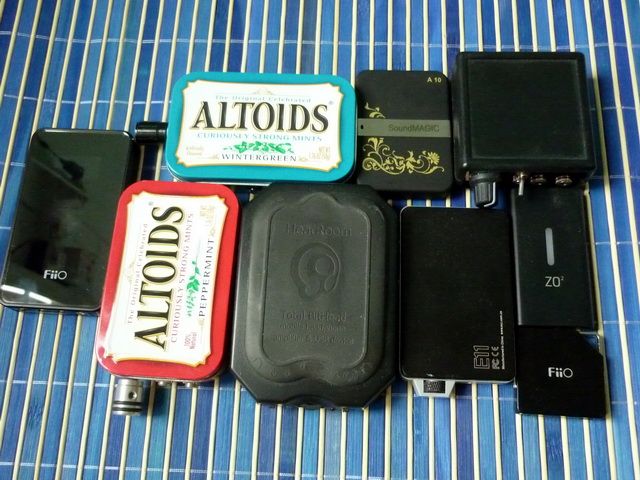
Evaluation Method
Sources: Sansa Fuze via custom LOD (around 0.5Vrms)
IEM used for evaluation: HifiMan RE0, Etymotic ER4S and Shure SE530.
Amps are all in their lowest gain setting. Volume matched using a SPL meter to ≤1dB via white noise and double checked with a multimeter. They are also RMAA tested (loop-out / loop-in though Tone Well UT24 audio interface with a 16ohm load) but only result of significant will be discussed. Output impedance and power are measured using fixed loads and 1kHz tone. The reference amps used for the elevation are Meier Audio StepDance and NwAvGuys’ O2 (built by JDS Labs), both excellent amps of their own.
Criteria
Rating
Out of a full mark of 5 points
● = 1 point
◎ = ½ point
○ = Zero point
i.e. ●●●◎○ = 3½ points
While I do own a few more sub$100 amps, I think those that are included here are some of the most popular among new buyers and thus make the best sense to be reviewed.
Content
(In alphabetical order)
*Note 1: I don’t have the Total AirHead, but instead the Total BitHead will step in for its place since the two share essential the same amp section and sound identical when run purely as an amp.
*Note 2: digiZoid has recently increase the ZO2.3's price up to $119.95, making it invalid for the sub$100 comparison.
--------------------------------------------------------------------
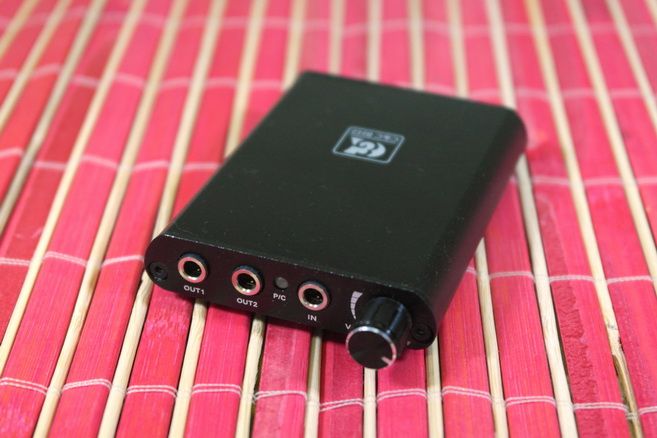 C&C BH (BH2)
C&C BH (BH2)

Evaluation Method
Sources: Sansa Fuze via custom LOD (around 0.5Vrms)
IEM used for evaluation: HifiMan RE0, Etymotic ER4S and Shure SE530.
Amps are all in their lowest gain setting. Volume matched using a SPL meter to ≤1dB via white noise and double checked with a multimeter. They are also RMAA tested (loop-out / loop-in though Tone Well UT24 audio interface with a 16ohm load) but only result of significant will be discussed. Output impedance and power are measured using fixed loads and 1kHz tone. The reference amps used for the elevation are Meier Audio StepDance and NwAvGuys’ O2 (built by JDS Labs), both excellent amps of their own.
Criteria
[Build Quality]
Build quality covers not only housing, but also material, design, size, etc – plastic is not necessary rated worst than metal. Functionality is the key here.
[Power]
Current are measured (volume matched driving fixed 47 ohm and 25.5 ohm load, 1kHz pure tone) to multiple with voltage for power. Most amp have more than enough power for typical IEM, the important point is having enough voltage for high impedance IEM (>100 ohm) and enough current for low impedance IEM (<16 ohm). However, only two typical numbers are covered here.
[Output Impedance]
Calculated from the voltage difference between no-load and a 47 ohm fixed load with a 1kHz pure tone. Less than 1 ohm is best for most IEM as it has the best dampening and doesn’t affect the FR curve of the IEM.
[Portability]
Size and weight comparison. Ratings are given as relative. From Biggest (1/5) to smallest (5/5)
[Speed]
Related to transient. Mainly about the sense of attack - especially noticeable on bass note.
[Transparency]
Not related to coloration, transparency is used as the sum of the openness and layering of the amp, which are what essential to produce the depth of the sound field
[Soundstage]
If transparency is the depth, then soundstage is used as the sum of width and separations. Together, they define the overall resolution of the amp.
[Coloration / Neutrality]
This can be either pure measurement (FR curve) or perceived difference in presentation. O2 will be the main reference here.
[EMI]
Tested using a cellphone receiving call in very close proximity.
[Hissing]
How well the amp behaves with hiss prone IEM, mainly SE530.
[Remark]
Odds and ends that are not covered on above.
Rating
Out of a full mark of 5 points
● = 1 point
◎ = ½ point
○ = Zero point
i.e. ●●●◎○ = 3½ points
While I do own a few more sub$100 amps, I think those that are included here are some of the most popular among new buyers and thus make the best sense to be reviewed.
Content
(In alphabetical order)
- C&C BH (BH2, $100)
- digiZoid ZO2.3 ($99.95 $119.95, *note 2)
- Electric Avenues PA2V2 ($60)
- FiiO E02i ($30)
- FiiO E07K ($89)
- FiiO E6 ($30)
- FiiO E7 ($85)
- FiiO E11 ($65)
- Fred_fred_2004's 3 Channels Headphone amp ($92)
- HeadRoom Total AirHead ($99, *note 1)
- JDS Labs cmoyBB v2.02 ($60)
- SoundMAGIC A10 ($60)
*Note 1: I don’t have the Total AirHead, but instead the Total BitHead will step in for its place since the two share essential the same amp section and sound identical when run purely as an amp.
*Note 2: digiZoid has recently increase the ZO2.3's price up to $119.95, making it invalid for the sub$100 comparison.
--------------------------------------------------------------------

Build Quality: ●●●●○ (Not the best looking but solid overall)
Power: ●●●●○ (Great in measurement but lacking in actual performance, see remark)
Output Impedance: ●●●●● (0.1Ω + 100Ω, dual outputs)
Portability: ●●●●◎ (Ultra-portable)
Speed: ●●●●○ (just tiny bit slow, power related see remark)
Transparency: ●●●●○ (Decent depth, but undifined layering)
Soundstage: ●●●●● (Great width and seperation)
Coloration / Neutrality: ●●●●◎ (Almost neutral)
EMI: ●●●◎○ (Susceptible)
Power: ●●●●○ (Great in measurement but lacking in actual performance, see remark)
Output Impedance: ●●●●● (0.1Ω + 100Ω, dual outputs)
Portability: ●●●●◎ (Ultra-portable)
Speed: ●●●●○ (just tiny bit slow, power related see remark)
Transparency: ●●●●○ (Decent depth, but undifined layering)
Soundstage: ●●●●● (Great width and seperation)
Coloration / Neutrality: ●●●●◎ (Almost neutral)
EMI: ●●●◎○ (Susceptible)
Hissing: ●●●●● (Silence)
Remark: The BH under review here is a BH2 - the two share the same topology on amp section but different in battery. The original BH uses a 1100mAH soldered on Li-ion while the BH2 uses a removable 900mAH cellphone battery. The official description says that the new battery brings 'better stability and improved standby time'. There is no mentioning of SQ improvement and judging from the new power section, it should not affect the SQ by much, if any.
A few interesting features on the BH: First, dual outputs. One of them is a normal output with low impedance while the other is the P-to-B output that is supposed to turn a Etymotic ER4P to a ER4B. This is different from the more typical P-to-S impedance adapter we usually see. To truly ultilize the P-to-B function, you will need to use an after-market cable with no resistor pod in the cable, otherwise you will be getting a pseudo ER4B. Second, BH comes with both a SF and LF switch. SF stands for 'sound field', which is basically like a 3D effect. While it has its usefulness, it is a little overtuned. Sometime it sound good, but most of the time it is a bit too artificial. LF stands for 'low frequency' boost. It is however not just a bass boost, as it boosts treble too. So it is really more of a V-shaped boost. Depends on what you like, this can be either benefiical or a turn-off. Lastly, gain settings are about +5.4dB for low and +18.8dB for high.
There are a few things on the BH that are outstanding. Fisrt, it measured really well. Flat FR curve, low output impedance, low noise and good output power to dummy load. Second, it has a great soundstage. Truly one of the best among sub$100 amp even though layer can be a little blurry at time. Thrid, good clarity and lastly, long run time. So is there anything to dislike about the BH? Unfortunately, there is one. The amp, while looking good on spec and measurement, doesn't sound like it is quite as powerful and tight as it claims to be. In fact, it is slightly underpowered in sound. The first subtle thing I noticed is the softer bass hit and attack that is a little distanced and blurry at time. This causes slight lost in texture and detail from bass up to lower vocal. This is rather subtle and proabbly not something very obvious at first, but you can connect the amp to a decent external USB 5V supply (USB battery pack or 1A USB adapter) and slowly the missing bass attack and texture will appear in the presentaion. Once disconnected, they will slowly faint into the background again. It is a sign that the amp is underpowered, and could be better if there is a better power section.
The slight lost of attack and texture do give BH a more mellowed, musical sound. However, it is still technically a downside as you are hearing less of what should have been there. Despite that, BH is still overall a really good sounding amp, and overall an excellent value for all the features it has.
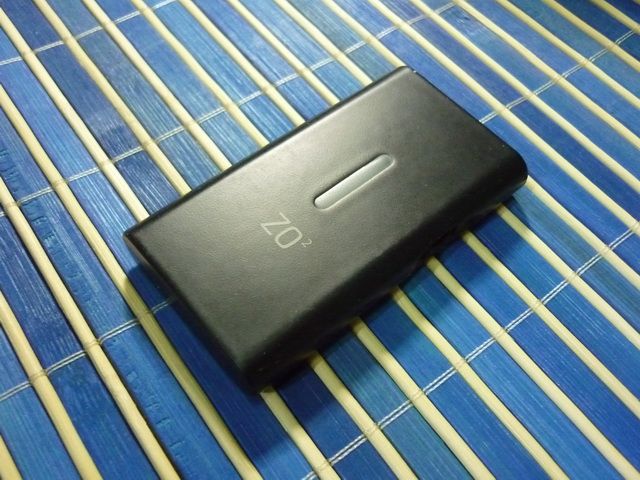
digiZoid ZO2.3
Build Quality: ●●●●● (Beautifully finished, even with a full plastic housing)
Power: ●●●●◎ (Decently powerful)
Output Impedance: ●●●●○ (2Ω)
Portability: ●●●●◎ (Ultra-portable)
Speed: ●●●●○ (Decent)
Transparency: ●●●◎○ (slightly forwarded)
Soundstage: ●●●○○ (Not particularly wide)
Coloration / Neutrality: ●●●◎○ (Never quite a flat line, but EQ is its game)
EMI: ●●●◎○ (Easily susceptible)
Hissing: ●●●○○ (Fairly noticeable)
Remark: The bass boosting ZO2.3 isn’t near the best sounding amp in the comparison and yet it is one of the most expensive (top at $99.95 *digiZoid has increased the price to $119.95, making ZO2.3 invalid for the sub$100 comparison). As purely an amp, ZO2.3 has a roll off bass (in Bass Level 0 setting) and doesn’t have quite the resolution compared to those that are cheaper in price. However, ZO2.3 brings something else to the table that will worth your while – the multi-level bass boost, and improved from the original ZO, the ability to take line-out signal. Though it might not be the best sounding or the most powerful amp around, it is great for adding bass to lean sounding IEM. At least for me, I tend to see it as an EQ first and an amp second. It is small so it won’t take much space, and the overall finish is pretty good. The output impedance is a bit high, but any IEM over 16 ohm shouldn’t be a problem at all. However, I won’t use it with IEM of very low impedance (or really high sensitivity) as hissing can become more noticeable.
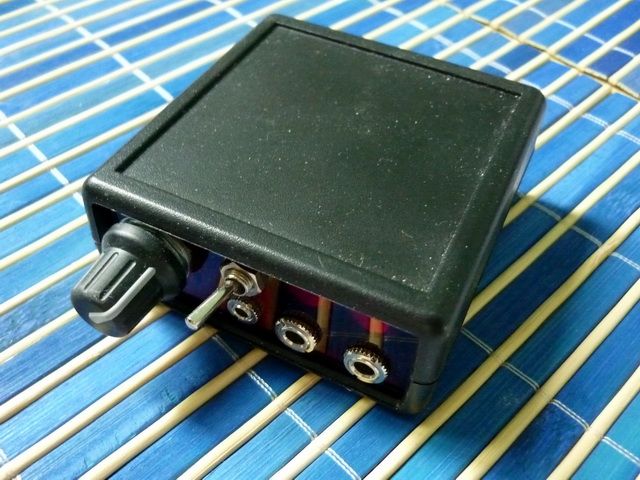
Electric Avenues PA2V2
Build Quality: ●●●◎○ (Simple design with some shortcomings)
Power: ●●●●● (Plenty for most)
Output Impedance: ●●●●● (0.45 Ω)
Portability: ●●●○○ (Almost a full size)
Speed: ●●◎○○ (noticeably slow with a weak bass impact, likely side effect from the big input and output caps)
Transparency: ●●●●○ (Decently deep, but not quite as defined in layer)
Soundstage: ●●●●◎ (Quite wide)
Coloration / Neutrality: ●●●◎○ (Laid back and slightly lush in presentation)
EMI: ●◎○○○ (Fairly bad)
Hissing: ●●●●● (Little to no hiss)
Remark: I have a mix feeling about PA2V2. It is noticeably slow (might have something to do with the bit input/output caps) but has fairly good transparency and soundstage – all works well to create a laid back, musical and lush sound. It is colored, but in ear pleasing way. It explains why PA2V2, though quite an old design, is still fairly popular among new amp buyer. My issue with PA2V2 is however less on the sound but more on the tech.
PA2V2 is based on the Boomer series of audio amp chip from National Semiconductor. Another chip from the same family is also used on the2nd generation of Boostaroo (which I own) and that explains why the overall sound signature is so close. The first thing I noticed is that PA2V2 can’t take normal AA batteries (which cause distortion) but instead only works with AA NiMH rechargeable. This is strange as Boostaroo will take normal AA just fine while PA2V2 can’t . The 2nd thing I noticed is the lack of proper recharging circuit when rechargeable must be used. The only thing between the AA rechargeable and external DC supply is a 47 ohm resistor – that means unplugging the DC adapter is a must or else there is a risk on overcharging the batteries. The 3rd thing I noticed is the volume control, which if I am not mistaken, is more like a gain control. By setting the ratio between the two internal variable resistor switches and the volume pot, the overall gain can be controlled (and so as the output volume). The few problems are, 1) the two variable resistors are not always matched, even in their lowest position. I have to match them myself to balance the left and right channels using RMAA and Stepdance as reference. 2) Rising the variable resistor not only increase gain, but also decrease the usable area of the volume pot (causing pot to max out on gain even when it hasn’t reached its highest position). 3) Rising gain seems to worsen the performance of the chip. The Boomer chip is best used with low gain and high input. Lastly, it doesn’t seem like the amp is as powerful as what it is claimed to be. While the chip is capable of 200mW output, it is limited to certain condition (5V supply into 8 ohm load as written on datasheet). Given two AA NiMH rechargeable is only 2.4V (which is lower than the recommended 2.7V minimum of the chip), I double it can output 200mW regularly. These are just the majority of shortcomings on PA2V2, but they are not something obvious to the average user. It is just showing that PA2V2 is a fairly outdated design with issue of its own. While it all depends on whether you can live with these issues or not - for roughly the same price, cmoyBB or E11 make better sense to me.
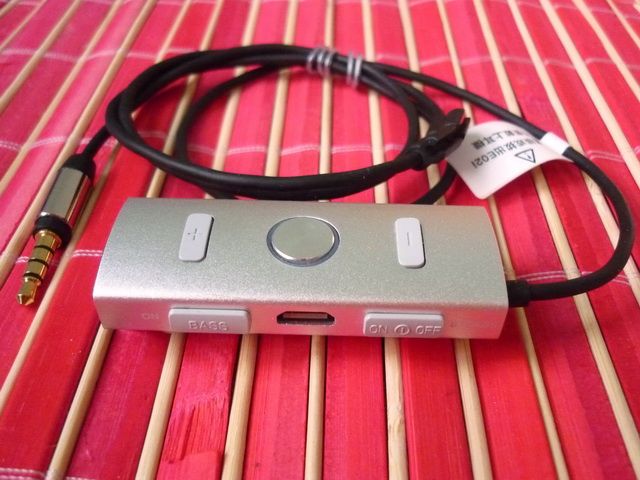
FiiO E02i
Build Quality: ●●●●● (Full aluminum construction )
Power: ●●●◎○ (Good power in low impedance load but fixed +4dB gain might not be enough for high impedance or low sensitivity load)
Output Impedance: ●●●●● (0.08 Ω)
Portability: ●●●●● (Tiny)
Speed: ●●●●○ (Decent)
Transparency: ●●●○○ (Lack openness in depth)
Soundstage: ●●●○○ (Lack a sense of good width)
Coloration / Neutrality: ●●●◎○ (Similar to E6, but has a little more warmth in the background)
EMI: ●●●●● (As designed for iPhone, no EMI issue at all)
Hissing: ●●●◎○ (Fixed gain makes hiss easiler to notice, but otherwise the level is similar to E6 )
Remark: E02i can be summerised as 'E6 with remote+mic for iPhone'. The overall SQ is compatible except E02i carries a slightly more sense of warmth. It doesn't have a volume control of its own but has to use the volume button to control the output of iPhone (or compatible Apple's products), which means it is basically double amping. The good news is that E02i is transparent enough that it doesn't color the sound much. Bass boost function is simialr to EQ2 on E6 as well. The amp can be bypassed when turn-off and acts solely like a remote and mic.
 FiiO E07K
FiiO E07K
Build Quality: ●●●●● (Solid chuck of metal, same size as E7)
Power: ●●●●● (Plenty for most)
Output Impedance: ●●●●● (0.09 Ω)
Portability: ●●◎○○ (Full size)
Speed: ●●●◎○ (Slightly slow)
Transparency: ●●●●○ (Decent depth but obscured by warmish tone)
Soundstage: ●●◎○○ (Narrow in width)
Coloration / Neutrality: ●●●●○ (Warmish tone)
EMI: ●●●●● (Silence)
Hissing: ●●●●● (Very very minor, only detectable in high volume)
Remark: Intented as upgrade over E7, the new E07K has an USB DAC section that is very close, if not identical to E17. The new EQ system also operates lke E17, with bass, treble as well as channel balanced control. Other new features includes line-out bypass and hold key. The amp section has been improved as well, with much more power and gain than E7. However, the newly added warmish tone, though giving some of the missing lower end texture back to E7, is also obscuring the background transparency. So while it is a fairly noticeable improvement over E7, it is still an entry level sounding amp in its core. The real value of E07K is in its all-in-one design, which offers much more features than any of its competitors.
Remark: The BH under review here is a BH2 - the two share the same topology on amp section but different in battery. The original BH uses a 1100mAH soldered on Li-ion while the BH2 uses a removable 900mAH cellphone battery. The official description says that the new battery brings 'better stability and improved standby time'. There is no mentioning of SQ improvement and judging from the new power section, it should not affect the SQ by much, if any.
A few interesting features on the BH: First, dual outputs. One of them is a normal output with low impedance while the other is the P-to-B output that is supposed to turn a Etymotic ER4P to a ER4B. This is different from the more typical P-to-S impedance adapter we usually see. To truly ultilize the P-to-B function, you will need to use an after-market cable with no resistor pod in the cable, otherwise you will be getting a pseudo ER4B. Second, BH comes with both a SF and LF switch. SF stands for 'sound field', which is basically like a 3D effect. While it has its usefulness, it is a little overtuned. Sometime it sound good, but most of the time it is a bit too artificial. LF stands for 'low frequency' boost. It is however not just a bass boost, as it boosts treble too. So it is really more of a V-shaped boost. Depends on what you like, this can be either benefiical or a turn-off. Lastly, gain settings are about +5.4dB for low and +18.8dB for high.
There are a few things on the BH that are outstanding. Fisrt, it measured really well. Flat FR curve, low output impedance, low noise and good output power to dummy load. Second, it has a great soundstage. Truly one of the best among sub$100 amp even though layer can be a little blurry at time. Thrid, good clarity and lastly, long run time. So is there anything to dislike about the BH? Unfortunately, there is one. The amp, while looking good on spec and measurement, doesn't sound like it is quite as powerful and tight as it claims to be. In fact, it is slightly underpowered in sound. The first subtle thing I noticed is the softer bass hit and attack that is a little distanced and blurry at time. This causes slight lost in texture and detail from bass up to lower vocal. This is rather subtle and proabbly not something very obvious at first, but you can connect the amp to a decent external USB 5V supply (USB battery pack or 1A USB adapter) and slowly the missing bass attack and texture will appear in the presentaion. Once disconnected, they will slowly faint into the background again. It is a sign that the amp is underpowered, and could be better if there is a better power section.
The slight lost of attack and texture do give BH a more mellowed, musical sound. However, it is still technically a downside as you are hearing less of what should have been there. Despite that, BH is still overall a really good sounding amp, and overall an excellent value for all the features it has.

digiZoid ZO2.3
Build Quality: ●●●●● (Beautifully finished, even with a full plastic housing)
Power: ●●●●◎ (Decently powerful)
Output Impedance: ●●●●○ (2Ω)
Portability: ●●●●◎ (Ultra-portable)
Speed: ●●●●○ (Decent)
Transparency: ●●●◎○ (slightly forwarded)
Soundstage: ●●●○○ (Not particularly wide)
Coloration / Neutrality: ●●●◎○ (Never quite a flat line, but EQ is its game)
EMI: ●●●◎○ (Easily susceptible)
Hissing: ●●●○○ (Fairly noticeable)
Remark: The bass boosting ZO2.3 isn’t near the best sounding amp in the comparison and yet it is one of the most expensive (top at $99.95 *digiZoid has increased the price to $119.95, making ZO2.3 invalid for the sub$100 comparison). As purely an amp, ZO2.3 has a roll off bass (in Bass Level 0 setting) and doesn’t have quite the resolution compared to those that are cheaper in price. However, ZO2.3 brings something else to the table that will worth your while – the multi-level bass boost, and improved from the original ZO, the ability to take line-out signal. Though it might not be the best sounding or the most powerful amp around, it is great for adding bass to lean sounding IEM. At least for me, I tend to see it as an EQ first and an amp second. It is small so it won’t take much space, and the overall finish is pretty good. The output impedance is a bit high, but any IEM over 16 ohm shouldn’t be a problem at all. However, I won’t use it with IEM of very low impedance (or really high sensitivity) as hissing can become more noticeable.

Electric Avenues PA2V2
Build Quality: ●●●◎○ (Simple design with some shortcomings)
Power: ●●●●● (Plenty for most)
Output Impedance: ●●●●● (0.45 Ω)
Portability: ●●●○○ (Almost a full size)
Speed: ●●◎○○ (noticeably slow with a weak bass impact, likely side effect from the big input and output caps)
Transparency: ●●●●○ (Decently deep, but not quite as defined in layer)
Soundstage: ●●●●◎ (Quite wide)
Coloration / Neutrality: ●●●◎○ (Laid back and slightly lush in presentation)
EMI: ●◎○○○ (Fairly bad)
Hissing: ●●●●● (Little to no hiss)
Remark: I have a mix feeling about PA2V2. It is noticeably slow (might have something to do with the bit input/output caps) but has fairly good transparency and soundstage – all works well to create a laid back, musical and lush sound. It is colored, but in ear pleasing way. It explains why PA2V2, though quite an old design, is still fairly popular among new amp buyer. My issue with PA2V2 is however less on the sound but more on the tech.
PA2V2 is based on the Boomer series of audio amp chip from National Semiconductor. Another chip from the same family is also used on the2nd generation of Boostaroo (which I own) and that explains why the overall sound signature is so close. The first thing I noticed is that PA2V2 can’t take normal AA batteries (which cause distortion) but instead only works with AA NiMH rechargeable. This is strange as Boostaroo will take normal AA just fine while PA2V2 can’t . The 2nd thing I noticed is the lack of proper recharging circuit when rechargeable must be used. The only thing between the AA rechargeable and external DC supply is a 47 ohm resistor – that means unplugging the DC adapter is a must or else there is a risk on overcharging the batteries. The 3rd thing I noticed is the volume control, which if I am not mistaken, is more like a gain control. By setting the ratio between the two internal variable resistor switches and the volume pot, the overall gain can be controlled (and so as the output volume). The few problems are, 1) the two variable resistors are not always matched, even in their lowest position. I have to match them myself to balance the left and right channels using RMAA and Stepdance as reference. 2) Rising the variable resistor not only increase gain, but also decrease the usable area of the volume pot (causing pot to max out on gain even when it hasn’t reached its highest position). 3) Rising gain seems to worsen the performance of the chip. The Boomer chip is best used with low gain and high input. Lastly, it doesn’t seem like the amp is as powerful as what it is claimed to be. While the chip is capable of 200mW output, it is limited to certain condition (5V supply into 8 ohm load as written on datasheet). Given two AA NiMH rechargeable is only 2.4V (which is lower than the recommended 2.7V minimum of the chip), I double it can output 200mW regularly. These are just the majority of shortcomings on PA2V2, but they are not something obvious to the average user. It is just showing that PA2V2 is a fairly outdated design with issue of its own. While it all depends on whether you can live with these issues or not - for roughly the same price, cmoyBB or E11 make better sense to me.

FiiO E02i
Build Quality: ●●●●● (Full aluminum construction )
Power: ●●●◎○ (Good power in low impedance load but fixed +4dB gain might not be enough for high impedance or low sensitivity load)
Output Impedance: ●●●●● (0.08 Ω)
Portability: ●●●●● (Tiny)
Speed: ●●●●○ (Decent)
Transparency: ●●●○○ (Lack openness in depth)
Soundstage: ●●●○○ (Lack a sense of good width)
Coloration / Neutrality: ●●●◎○ (Similar to E6, but has a little more warmth in the background)
EMI: ●●●●● (As designed for iPhone, no EMI issue at all)
Hissing: ●●●◎○ (Fixed gain makes hiss easiler to notice, but otherwise the level is similar to E6 )
Remark: E02i can be summerised as 'E6 with remote+mic for iPhone'. The overall SQ is compatible except E02i carries a slightly more sense of warmth. It doesn't have a volume control of its own but has to use the volume button to control the output of iPhone (or compatible Apple's products), which means it is basically double amping. The good news is that E02i is transparent enough that it doesn't color the sound much. Bass boost function is simialr to EQ2 on E6 as well. The amp can be bypassed when turn-off and acts solely like a remote and mic.

Build Quality: ●●●●● (Solid chuck of metal, same size as E7)
Power: ●●●●● (Plenty for most)
Output Impedance: ●●●●● (0.09 Ω)
Portability: ●●◎○○ (Full size)
Speed: ●●●◎○ (Slightly slow)
Transparency: ●●●●○ (Decent depth but obscured by warmish tone)
Soundstage: ●●◎○○ (Narrow in width)
Coloration / Neutrality: ●●●●○ (Warmish tone)
EMI: ●●●●● (Silence)
Hissing: ●●●●● (Very very minor, only detectable in high volume)
Remark: Intented as upgrade over E7, the new E07K has an USB DAC section that is very close, if not identical to E17. The new EQ system also operates lke E17, with bass, treble as well as channel balanced control. Other new features includes line-out bypass and hold key. The amp section has been improved as well, with much more power and gain than E7. However, the newly added warmish tone, though giving some of the missing lower end texture back to E7, is also obscuring the background transparency. So while it is a fairly noticeable improvement over E7, it is still an entry level sounding amp in its core. The real value of E07K is in its all-in-one design, which offers much more features than any of its competitors.
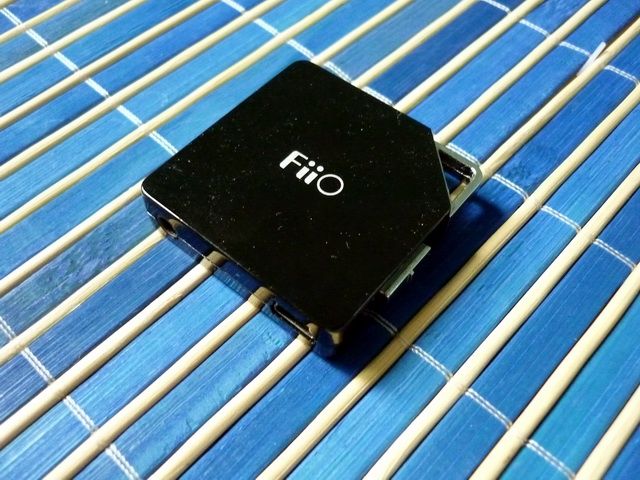
FiiO E6
Build Quality: ●●●●◎ (A bit toy like but it is well built for the price)
Power: ●●●●○ (Decently powerful)
Output Impedance: ●●●●● (0.15 Ω)
Portability: ●●●●● (Tiny)
Speed: ●●●●○ (Decent)
Transparency: ●●●◎○ (Lack openness in depth)
Soundstage: ●●●○○ (Lack a sense of good width)
Coloration / Neutrality: ●●●◎○ (Neutral to in presentation, but warm in the sense that space is noticeably clustered)
EMI: ●●●●○ (Slightly susceptible, annoying but acceptable)
Hissing: ●●●●○ (Hiss in high volume)
Remark: For only half the price over the next more expensive amp in the whole comparison, E6 is quite a performer. While resolution (transparency + soundstage) is its weakness, the overall sound and the bass boost EQ are upgrade over its predecessor, the E5. It even compared slightly better to E7, which offer slightly better transparency but has a rather cold presentation. The E6 is more balanced and richer in tone in that regard. It is not the be-all-end-all of tiny amp, but it is useful if your source isn’t particularly capable or you are on a very tight budget.

FiiO E7
Build Quality: ●●●●● (Solid chuck of metal)
Power: ●●●●◎ (Good as long as high voltage isn’t required)
Output Impedance: ●●●●● (0.2 Ω)
Portability: ●●◎○○ (Full size)
Speed: ●●●●○ (Decent)
Transparency: ●●●●◎ (Rather good in rendering depth)
Soundstage: ●●◎○○ (Narrow in width)
Coloration / Neutrality: ●●●●◎ (Very clean, but somewhat cold and lean)
EMI: ●●●●● (Little to no interference)
Hissing: ●●●●○ (Hiss in high volume)
Remark: E7 is originally designed in the short period of the netbook era a few years ago as an audio solution for those that are limited in their PC’s hardware while still want a decent sound with portability. As far as that goal is concerned, I think E7 has more than done its job. But as a replacement for full size PC and laptop that often packed much better hardware than netbook, the E7 can come short sometime, especially on its amp section. It is clean sounding, but perhaps a bit too clean for its own good as most people actually prefer a dirtier, richer tone for their music and rather consider coloration as an improvement. But given it has a fairly good USB DAC and works as a pure amp for under $100, it is still a good bang for the buck for those with tight budget – just don’t expect it to be a miracle.
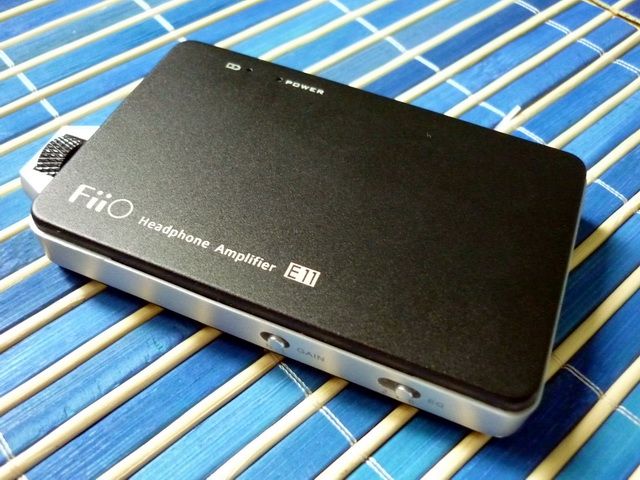
FiiO E11
Build Quality: ●●●●◎ (Unique design with a plus of replaceable battery)
Power: ●●●●● (Plenty for most)
Output Impedance: ●●●●● (0.15 Ω)
Portability: ●●●◎○ (Smaller than most full size)
Speed: ●●●●● (Good in attack)
Transparency: ●●●●◎ (Good in rendering depth and layer)
Soundstage: ●●●●○ (Decent)
Coloration / Neutrality: ●●●●◎ (Mostly neutral with slightly more bass body)
EMI: ●●●●○(Slightly susceptible, annoying but acceptable)
Hissing: ●●●◎○ (Slightly hissy)
Remark: Taking the once popular AMB’s mini^3 three channels concept, FiiO has managed to tweak the idea around and adapted it on the E11. Consider that mini^3 is never quite a sub-$100 amp (kit alone costs >$90 and a fully assembled amp usually goes for $150 or so), the E11 is quite a bargain for $65 or so. Though it uses mostly plastic as its housing, the overall industrial design of the amp just looks better than its competition. The addition of a user replaceable Li-ion battery is also the first for the sub-$100 category. However, it does have a downside of not usable when recharging due to the virtual ground of the three channels design. Another one issue is on its bass performance – with a slight phase shift in the sub-bass region, E11 has usually perceived to have a richer bass body. Though the FR curve is still linear / flat, the extra bass body often gives people the impression of E11 being dark sound. But A/Bing it against the reference O2 (which is neither particularly bright nor dark), the difference is much small than one might thought. It is never quite the best pairing with bass heavy IEM, but overall E11 still has the best control and easily sounds the most technical proficient in the sub-$100 bucket with a good balance of everything. It is also one of the most powerful in the comparison, especially for the higher impedance headphone. For really sensitive IEM however, it might come as a bit too powerful.

Fred_fred_2004’s 3 Channels Headphone Amp
Build Quality: ●●●●◎ (Well build for something handmade)
Power: ●●●●● (Plenty for most)
Output Impedance: ●●●●● (0.1 Ω)
Portability: ●●○○○ (Full size)
Speed: ●●●●◎ (Good, just slightly soft)
Transparency: ●●●●◎ (Just as good E11 on layer but a tiny bit shorter on depth)
Soundstage: ●●●●◎ (Very good)
Coloration / Neutrality: ●●●●● (Very neutral, just tiny bit mellow on treble)
EMI: ●●○○○ (Not good)
Hissing: ●●●●◎ (Very little hiss)
Remark: Developed and built by Howard Lee (fred_fred2004), this amp shares similar topology as the cmoy2 – which is an A47 design (or ‘buffered cmoy’ design) with an added buffer ground. The original idea of A47 amp is to use a dual channel opamp in one channel (so two dual opamp for both channels), where one of the opamp in the chip is used for gain stage when the other is used for buffering. This is originally done to double the overall output current of a cmoy. The cmoy2 / 3 Channels design further increases the power output by adding a buffered ground.
Despite not measuring nearly as well in RMAA as E11 or cmoyBB, this amp is by far the best sounding amp in this review. It is clean sounding, good in resolution and overall very neutral. In fact, it sounds closest to the O2, which is the reference amp of this whole shootout. Objectively, this isn’t the top amp to get by looking at its measurement; but subjective, I am very inclined to place it on top of this shootout, just a hair ahead of E11. You just have to make out your mind on whether you want to go with measurement or opinion.
[UPDATE July 11st, 2013] After all this time, I finally realize what I have done wrongly in the original RMAA measurement with the 3CHA and why the measurement contridite my subjective listening. In listening, volume is limited to my normal setting. But during measurement, the volume usually has to be pushed much higher. Given the opamp in this amp is not rail-to-rail and thus the voltage swing is limited by the 9V battery supply, I was actually clipping the amp during the original RMAA measurement and therefore the result didn't look particularly great. Yet it was not a problem during listening since it was in much lower volume and didn't clip the amp. I have since redone the measurement by doubing the supply voltage (dual 9V battery in serial / 18V to 3CHA) and the new result confirms that the amp does measure as good as it sounds. For those who own a 3CHA, or plan to get one, I strongly recommend using it with 18V to get the best out of it.
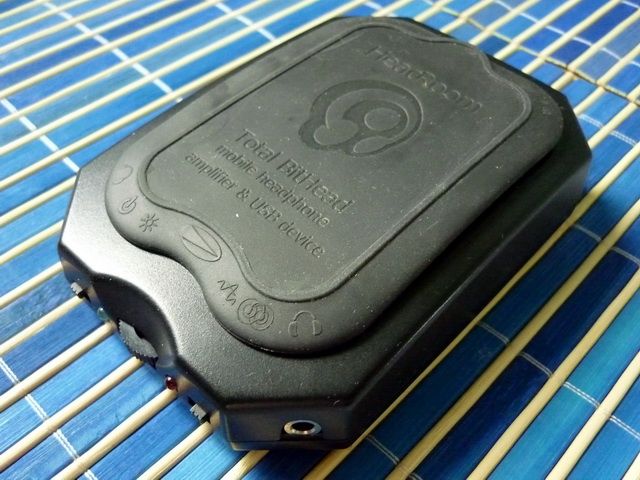
HeadRoom Total AirHead
Build Quality: ●●●●● (Like a tank)
Power: ●●●○○ (Weakest, worsen as load impedance goes down)
Output Impedance: ●●○○○ (
Portability: ●○○○○ (Larger than typical full size)
Speed: ●●●●◎ (Good speed, though impact is slightly weak)
Transparency: ●●●●○ (Decently deep)
Soundstage: ●●●●◎ (Fairly good)
Coloration / Neutrality: ●●●◎○ (Rolling off at the bass’ end with a 16ohm load is not a good thing)
EMI: ●○○○○ (Really bad)
Hissing: ●●◎○○ (Rather bad)
Remark: Like PA2V2, the Total AirHead (TA) is an old design. For whatever reason, HeadRoom doesn’t seem to want to update the design for the new generation of IEM that are much more efficient and probably trickier to drive. The good news first – 1) TA is the only amp in the comparison with a crossfeed circuit. I have had other portable amps with crossfeed before and the implementation on TA is by far the best in creating a very relaxing, natural, binaural-like listening effect. 2) The TA, as well as the Total BitHead (which is what steps in for TA here), is built like a tank. It might be a full plastic + rubber construction, the design is very much foolproof. The use of 4 AA batteries also means this amp will last almost forever as opposed to the Li-ion battery used on other amps. But it does come with the price of overall portability. 3) Transparency and soundstage are quite good, despite the other problems I’ll mention below.
Now comes the bad news – 1) the high output impedance means any headphone under
[UPDATE] Due to the use with a new, more precise multimeter and new measuring procedure, the output impedance of TA is lowered from the originally calculated 9.6 ohm to the more accurate 5.4 ohm. Though it is a good thing to know TA has lower output impedance, it is still quite high and doesn't dampen most sensitive IEM well enough as they are often in the 20-ish ohm range - thus the remark still stands.

JDS Labs cmoyBB v2.02
Build Quality: ●●●●◎ (Well build but no thrill)
Power: ●●●●● (Plenty for most)
Output Impedance: ●●●●● (0.51 Ω)
Portability: ●●○○○ (Full size)
Speed: ●●●●◎ (Good in speed, slightly softer in attack)
Transparency: ●●●◎○ (A bit lacking in depth and layer)
Soundstage: ●●●●● (Good rendering in width)
Coloration / Neutrality: ●●●●○ (A bit on the lush side)
EMI: ●●●●○ (Slightly susceptible, annoying but acceptable)
Hissing: ●●●●◎ (Very little)
Remark: Besides PA2V2, cmoyBB is the most DIY’ish among all the amps in comparison. However, it is also one of the best sounding cmoy I have ever heard. The PCB and soldering are both top notch for something hand built. The latest v2.03 even comes with option for higher current supply (for IEM with really low impedance) and smart recharging circuit. Adding to the fact that it is the only amp in the comparison that allows you to roll the opamp, it is definitely one of the most ‘playable’ amps in the sub-$100 price bucket. Overall the cmoyBB has good soundstage but comes relatively short in transparency. This gives it a lush and forwarded presentation that is fun, but not quite a neutral as it can be. This makes cmoyBB a good contrast to the warmer sounding E11 where its transparency is better than soundstage. Though it might not be quite as refined as E11, the presentation makes it a good choice for those who prefer a slightly colored, lusher sounding amp but still demand good technical performance. The ability to roll in a better sounding opamp (AD8066, or AD8620 with dual 9V batteries) also means cmoyBB is upgradeable. But this comes with extra cost as some opamp are not cheap. If I remember correctly, cmoyBB used to cost around $80. With the current $60 price tag, it is a good alternative to the E11 for those are willing to spend a bit more to ‘play around’.
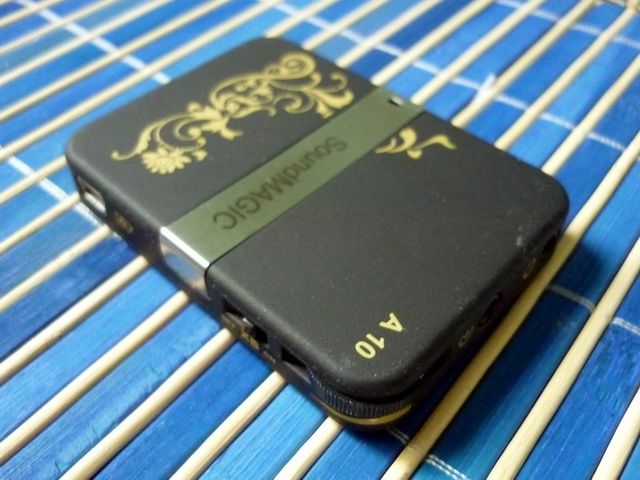
SoundMAGIC A10
Build Quality: ●●●●○ (Volume knob can really be placed in a better place)
Power: ●●●◎○ (Still enough, but noticeably weaker)
Output Impedance: ●●●●● (0.17 Ω)
Portability: ●●●●○ (Ultra-portable but on the larger size)
Speed: ●●●◎○ (Decent, but a bit rounded in the edge)
Transparency: ●●●●○ (Decent, but lack the open-end feeling)
Soundstage: ●●●◎○ (Decent, but with an added room-filling richness)
Coloration / Neutrality: ●●◎○○ (Rather colored, warm and lush)
EMI: ●●●●○ (slightly susceptible, annoying but acceptable)
Hissing: ●●●●● (Little to no hiss)
Remark: When A10 first launch, there is no E11 yet and cmoyBB is higher in price. This makes A10 a relatively good amp to buy back then, given it is better sounding than the iBasso T4 (which costs much more than A10). The one thing unique about A10 is its coloration. It is a slightly elevated bass and treble and a warm and thick sound. Smooth and musical are what A10 is going for, not reference and neutral. However, that also means A10 tends to be better sounding with colder sounding IEM as its warmness in tone might be too much for already warm sounding IEM. That is actually an opposite for E7, which pairs better with warm and rich sounding IEM. Perhaps the biggest downfall for A10 is the position of its volume knob that makes its prone to accidental volume change. Overall, A10 is suitable for those who are looking for a warm and smooth sounding amp, a bit like how many RSA amps sound like – which is a rather unique trait for A10 as no other amp in this comparison has the same signature. It might not be technically as good as the E11 or cmoyBB that cost around the same price, but I have known people often opt for signature rather than performance.
[Ranking]
- Fred_fred_2004's 3 Channels Headphone Amp.
- FiiO E11
- JDS Labs cmoyBB v2.02/ C&C BH (BH2)
- Electric Avenues PA2V2 / digiZoid ZO2.3 / FiiO E07K
- FiiO E6/ FiiO E02i
- FiiO E7 / SoundMAGIC A10
- HeadRoom Total AirHead
[Afterthought]
Here are a few things that don’t seem to fit into the review, yet still important to mention.
- Volume match is essential for getting the right auditioning condition. Simply matched by ears is not good enough, as I have discovered in the course of the review. Once you matched the volume on all amps, you will be surprised that the difference between amps is much less than what you would have thought before matching. At least that’s what I have noticed.
- I can understand why so many like PA2V2, but it isn’t quite something I can really recommend due to all the technical issues I have found out on it. Same goes for Total AirHead, which is just not the right amp for IEM user.
- There is no perfect amp in the review, so you’ll need to pick the one that best fit what you are looking for. The ranking above is merely my opinion of how their SQ compared, but there are more to consider beyond just SQ. Practicality is the other key to determine what amp will work for you, and so is synergy.